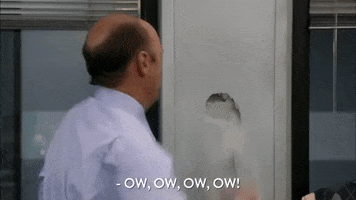- Joined
- Aug 27, 2015
- Messages
- 1,296
- Reaction score
- 979
Never in 35 years has salt creep caused a wall problem. Only wall repairs were putting plumbing through wall.
Follow along with the video below to see how to install our site as a web app on your home screen.
Note: This feature may not be available in some browsers.
Saltwater can be a destructive force when it comes to your home. Floors, metals and other materials don't mix well with salt creep and saltwater. We know how to protect our floors but what about our walls? Salt creep will find it's way to your wall that's for sure! I've had my share of wall damage and I wanted to hear from you all today and find out how you mitigate or eliminate wall damage! Let's talk about it!
1. Have you ever had to repaint, resurface or re-drywall a wall because of your saltwater tank?
2. How do you protect your walls from saltwater damage?

Its kind of a misnomer to call it creep if its jumping from the tank to the walls. I noticed it on my plaster walls and realized pretty quickly that its the aerosol generated by microbubbles doing it. On the tanks I have with no microbubble generation, this does not happen. You only need to break surface tension for gas exchange through surface agitation. Bubbles are an inefficient way to accomplish this this and very messy.
Also there was a comment here about aiming powerheads at the surface for agitation that was incorrect as a blanket assumption. This is in fact a very good way to accomplish gas exchange without making a mess. Just aim it at an angle so there are strong ripples and turnover at the surface, but no splashing. It seems counterintuitive, but there is strong science behind it and it works.
That's the reason I moved my RO/DI system to the basement and built a mixing station. It can flood all it wants and all it does is get the concrete floor wet...LOL!!!Ummmm same.. lol
Salt causes most common mold spores to dehydrate when they get wet. Its like poison to them.I have a strange question.....
One thing I noticed though is in that time the carpet should have been generating mold. It didn't smell moldy at all. It was grimy, but I expect that from evaporated salt water.
Will salt water (at our salinity levels) cause mold to grow under walls and under flooring? Or is there too much salt to actually inhibit the growth of mold and mildew?

I have never had to do this, living in Florida luckily we have tile floors and where the tank is sitting now is in front of a wall mirror that so far has not gotten the salt build up like in the past, actually none of the equipment has gotten the salt buildup like I have experienced in the past. I am glad that I have not had to make repairs and I feel for those of the reefers that have had to.Saltwater can be a destructive force when it comes to your home. Floors, metals and other materials don't mix well with salt creep and saltwater. We know how to protect our floors but what about our walls? Salt creep will find it's way to your wall that's for sure! I've had my share of wall damage and I wanted to hear from you all today and find out how you mitigate or eliminate wall damage! Let's talk about it!
1. Have you ever had to repaint, resurface or re-drywall a wall because of your saltwater tank?
2. How do you protect your walls from saltwater damage?

So, yay? Even if structures like under walls or under two by fours, the salt left over after the water evaporates is a powerful barrier to such insidious things as mold! That's really awesome. Not saying there's other negative effects that couldn't spawn in those spots, but still good to know!Salt causes most common mold spores to dehydrate when they get wet. Its like poison to them.
